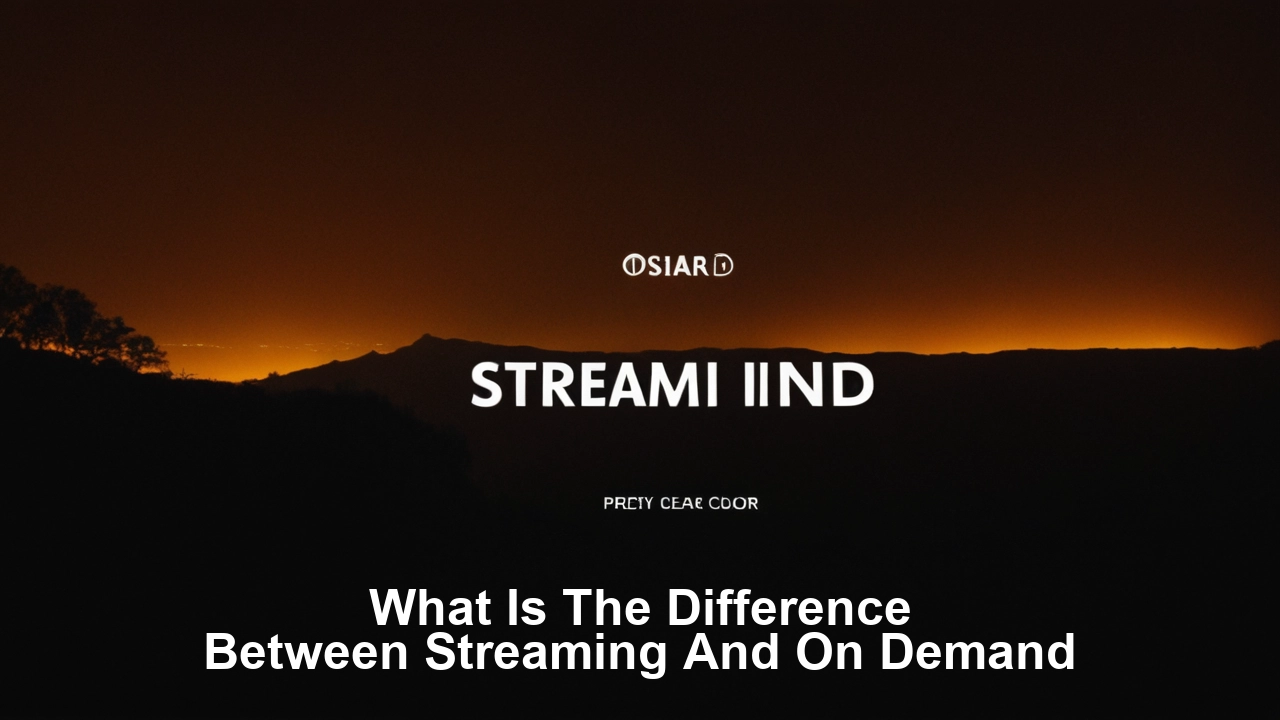What is the difference between streaming and on-demand?
The manner in which people take in media and entertainment has revolutionized in the last ten years. Today, more and more people are cutting the cord and no longer subscribing to DirecTV or satellite TV, and instead, they are choosing to watch television shows and movies on the internet. But what is the difference between streaming and on-demand? Which one of these plans is more suitable for a typical user? In this article, the author will compare the two approaches and state what he or she considers the advantages and disadvantages of each.
Streaming refers to the process of broadcasting a video feed without requiring the viewer to download files to his/her device. All the most popular streaming services, such as Netflix, Hulu, Disney Plus, and Amazon Prime Video, function this way. When you choose a program in terms of television programs or movies to watch, then you may start watching within seconds. The content is not even stored on your device; it is merely accessed over the web through a constant data feed. This makes it easy to view content without any interruption, but it also means that you have to have a steady, fast internet connection. This means that the quality of the stream can deteriorate due to the quality of the internet.
On the other hand, an on-demand service is one in which the user can download a video in which the video is stored on a device. You can then watch them anytime with or without an internet connection, depending on the service providers of the streaming platform. Some of the popular on-demand services are iTunes, Google Play Movies and TV, Vudu, and YouTube, among others. On-demand is mostly an à la carte model where you purchase each specific piece of content. This is different from streaming, which usually operates on a subscription basis that offers as much content as one can consume for a monthly fee. The main advantage of on-demand services is constancy and dependability. Videos are accessible and can be watched at any time when they have been downloaded for offline use. You also get reliable quality since the files are not subject to internet speed that may be real-time, slow, or intermittent.
On-demand and streaming do have some benefits over conventional IPTV or live TV that is transmitted via cable or satellite. Most importantly, streaming and on-demand enable you to have more flexible control over the available content and its availability. You can watch almost anything you desire whenever you want to because there are no specific time limits set for the programs, and you do not have to surf through hundreds of stations hoping to come across something that you would like to watch. You also receive more freedom when it comes to devices on which the content can be consumed. Unlike cable and satellite services that require a set-top box to be connected to your television, streaming and on-demand content can be viewed on phones, tablets, laptops, computers, and smart TVs.
Looking at video entertainment services available today, the most significant decision customers have to make is between live streaming and on-demand streaming. Some of the best live TV streaming services include YouTube TV, Hulu Live TV, and Sling TV, which provide a much more linear experience similar to the traditional cable and satellite services with live channels and program schedules. However, the available content choices are still much fewer than cable or satellite. In general, you can get only several dozens of channels. The amount of content choices has grown dramatically, and on-demand catalogs at services like Netflix now outweigh traditional pay TV outlets. Thus, if your focus is on the sheer amount and variety of shows and movies to watch whenever you want, an offering like Netflix is better.
Other things that differ greatly include cost. Such an on-demand service as iTunes can prove quite costly if you end up with a large collection of digital videos, having purchased films one by one. Monthly subscription fees for services that offer movies and shows for streaming, such as Netflix or Hulu, are usually between eight and sixteen dollars a month—way cheaper than a cable bill. However, the lowest-tier streaming services include free on-demand platforms like The Roku Channel, which contain advertisements. Of course, the best options are streaming bundles, which let you subscribe to several apps for one price, for instance, Amazon Prime Video Channels or Apple One.
There are always pros and cons to streaming versus on-demand, with concerns over availability, reliability, content options, cost, and functionality. Streaming is convenient and can be accessed immediately, but it needs a constant internet connection. On-demand is ideal because it guarantees that the lesson is accessible offline permanently, but it is not as fluid and convenient as streaming. In the end, there is no clear ‘winner’; it all comes down to personal choices and how an individual likes to watch movies. A significant number of consumers are, therefore, hybrid, and they are running different services to take advantage of the strengths of streaming and downloading on-demand video services.
Want more channels and better service? Dial (469) 213-7481 now to switch to satellite TV!


